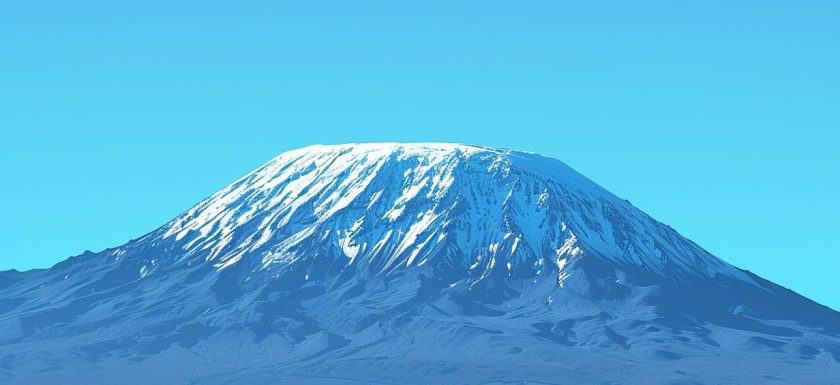
Mount Kilimanjaro, located in Tanzania, is not only the tallest mountain in Africa but also holds cultural significance for local tribes.
Its diverse ecosystems and landscapes make it a popular destination for climbers seeking a challenging yet accessible experience.
We will explore the different climbing routes on Mount Kilimanjaro, the requirements for climbing, and why this majestic mountain continues to capture the imagination of adventurers around the world.
Key Takeaways:
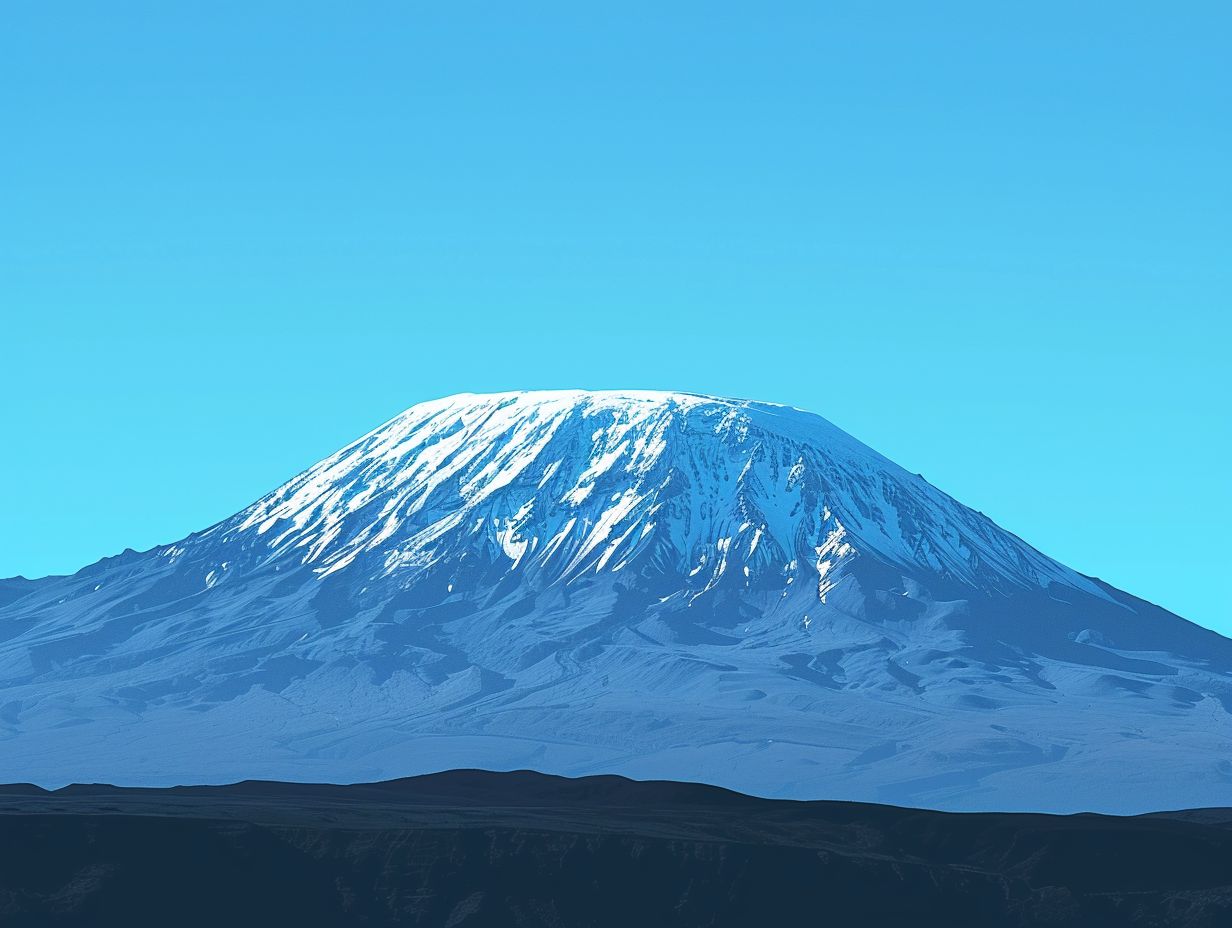
- Mount Kilimanjaro is the tallest mountain in Africa, making it a popular destination for climbers and adventurers.
- It is one of the Seven Summits, a prestigious challenge for mountaineers to climb the highest peaks of each continent.
- The mountain boasts diverse ecosystems and landscapes, from lush rainforests to arctic conditions at the summit.
Why Is Mount Kilimanjaro Famous?
Mount Kilimanjaro is famous for being the tallest mountain in Africa and one of the renowned Seven Summits, attracting climbers and adventurers seeking to conquer its challenging peaks. Its rich geology and historical significance add to the allure of this iconic mountain.
Standing at an elevation of about 5,895 meters above sea level, Mount Kilimanjaro’s snow-capped peak is a sight to behold, drawing climbers from all over the globe. The mountain’s inclusion in the Seven Summits challenge, a mountaineering quest to reach the highest peak on each of the seven continents, further solidifies its status as a must-conquer destination.
Over the years, numerous adventurers and mountaineers have tested their skills and endurance against its steep slopes, making it a revered location in the world of climbing.
Tallest Mountain in Africa
As the tallest mountain in Africa, Mount Kilimanjaro reaches an impressive altitude that offers breathtaking views and challenges climbers to test their limits against its towering peak.
Standing at approximately 19,341 feet (5,895 meters) above sea level, the summit of Kilimanjaro provides a unique vantage point where one can witness spectacular sunrises above the clouds.
Due to the high altitude, climbers may experience symptoms of altitude sickness, such as headaches and nausea, as their bodies adjust to the reduced oxygen levels.
Being the highest mountain in Africa, Kilimanjaro holds a significant place in the continent’s landscape and is a renowned attraction for adventurers seeking to conquer its majestic slopes.
One of the Seven Summits
Mount Kilimanjaro holds the distinction of being one of the Seven Summits, a prestigious challenge for climbers aiming to conquer the highest peaks on each continent. It has seen the footprints of world record holders and adventurers seeking to make history.
Among the accomplished climbers who have braved the heights of Mount Kilimanjaro is Reinhold Messner, known for his remarkable solo ascent without supplemental oxygen. This feat cemented his place in mountaineering history, adding to the mountain’s legacy in the climbing community.
The Seven Summits challenge, which includes Kilimanjaro, has drawn climbers from around the globe, with each successful summit adding another chapter to the mountain’s storied past. Its allure lies not only in its physical challenges but also in the breathtaking views and the sense of accomplishment it offers to those who reach its peak.
Diverse Ecosystems and Landscapes
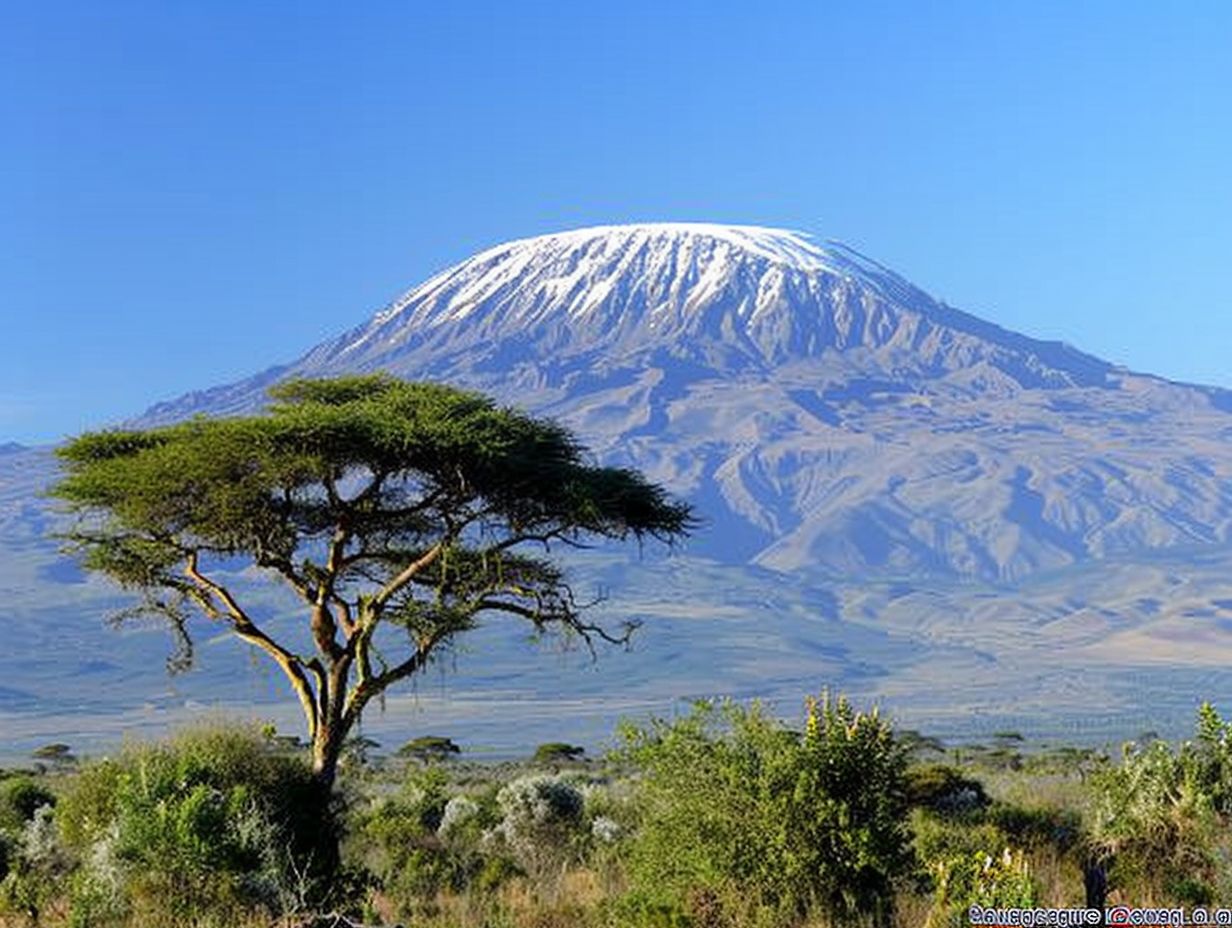
Mount Kilimanjaro boasts diverse ecosystems and breathtaking landscapes across its different climate zones, from lush forests with unique tree species to barren alpine deserts, offering climbers a journey through varied natural wonders.
As climbers ascend the slopes of Kilimanjaro, they encounter distinctive biozones such as the montane forest zone, known for its tangled canopy of Afro-montane trees like African yellowwoods and olive trees.
The transition to the heath and moorland zone reveals a carpet of endemic plant species like giant lobelias and groundsels, adding a surreal touch to the rugged terrain.
At higher elevations, the semi-desert and alpine desert zones showcase a stark but mesmerizing landscape marked by vast expanses of volcanic rock and scattered hardy plants like tussock grass and everlasting flowers.
Challenging Yet Accessible Climbing Routes
Mount Kilimanjaro offers climbers a challenging yet accessible ascent with various routes catering to different skill levels. The success rates and risks associated with climbing to high altitudes have made it a thrilling yet demanding endeavor.
Due to its soaring height of 19,341 feet, altitude sickness remains a primary concern for climbers, affecting people differently and potentially hampering their journey. The diverse climate zones present on Kilimanjaro, ranging from lush rainforest to arid alpine desert, add to the challenge and beauty of the ascent.
The popular Marangu route, also known as the ‘Coca-Cola route,’ provides huts for accommodation, offering a unique experience compared to the camping option on other routes.
Climbers must acclimatize properly to mitigate the risks associated with high altitude, including headaches, nausea, and potentially life-threatening conditions such as cerebral or pulmonary edema.
The success rate of climbers reaching the summit varies depending on factors like route choice, physical preparedness, and altitude adaptation. Experienced guides play a crucial role in ensuring climbers’ safety and adherence to proper climbing techniques and health guidelines.
Cultural Significance for Local Tribes
Mount Kilimanjaro holds cultural significance for local tribes in Tanzania, with historical figures like Ptolemy of Alexandria and modern explorers such as Hans Meyer, Yohani Lauwo, and Sheila MacDonald contributing to the mountain’s rich heritage.
The Chagga people, primarily living on the slopes of Kilimanjaro, have held the mountain in reverence for centuries, considering it a source of spiritual energy and ancestral connection.
Traditional beliefs intertwine with the mountain’s history, making it a symbol of cultural identity for the indigenous communities. This connection is further strengthened by the stories passed down through generations, highlighting the mountain’s role in shaping local customs and traditions.
What Are the Different Climbing Routes on Mount Kilimanjaro?
Mount Kilimanjaro offers various climbing routes catering to different preferences and skill levels, including the popular Marangu, Machame, Lemosho, Rongai, and Northern Circuit routes, each presenting unique challenges and experiences for climbers.
Among these routes, the Marangu route, also known as the ‘Tourist Route,’ stands out for its gradual ascent and comfortable huts along the way.
In contrast, the Machame route, nicknamed the ‘Whiskey Route,’ is renowned for its steep terrain and stunning scenery, making it a favorite among adventurous climbers.
Marangu Route
The Marangu Route on Mount Kilimanjaro is often referred to as the ‘Coca-Cola route’ due to its popularity and relative ease of access, offering climbers the potential to summit Africa’s highest peak via a moderate trekking experience.
The nickname ‘Coca-Cola route’ stems from the availability of bottled Coca-Cola at some points along the trail, adding a unique touch to the climbing experience. This route is favored by many climbers for its relatively comfortable hut accommodation along the way, providing a break from camping in harsh conditions.
Although the Marangu Route is considered one of the less challenging paths up Kilimanjaro, climbers should not underestimate the altitudes and physical demands required for high-altitude trekking. The gradual incline and well-defined path offer a more straightforward ascent compared to some of the other routes available.
Machame Route
The Machame Route on Mount Kilimanjaro is known for its scenic beauty and varied landscapes, providing climbers with a challenging yet rewarding journey to the summit of Africa’s highest peak through lush rainforests and alpine deserts.
As trekkers embark on the Machame Route, they are greeted by the mesmerizing sights and sounds of the vibrant rainforests, filled with ancient trees draped in moss and mist swirling through the canopy.
The trail gradually ascends, revealing stunning vistas of distant valleys and neighboring peaks. The transition from the dense vegetation to the rocky alpine desert is marked by a shift in climate and terrain, testing the endurance and grit of climbers.
While navigating the rocky paths and challenging terrain, climbers are immersed in a world of extremes, experiencing the dramatic changes in altitude and weather. The allure of the Machame Route lies in its ability to showcase the diverse ecosystems of Kilimanjaro, from rich biodiversity in the lower elevations to the stark, otherworldly landscapes of the higher reaches.
Lemosho Route
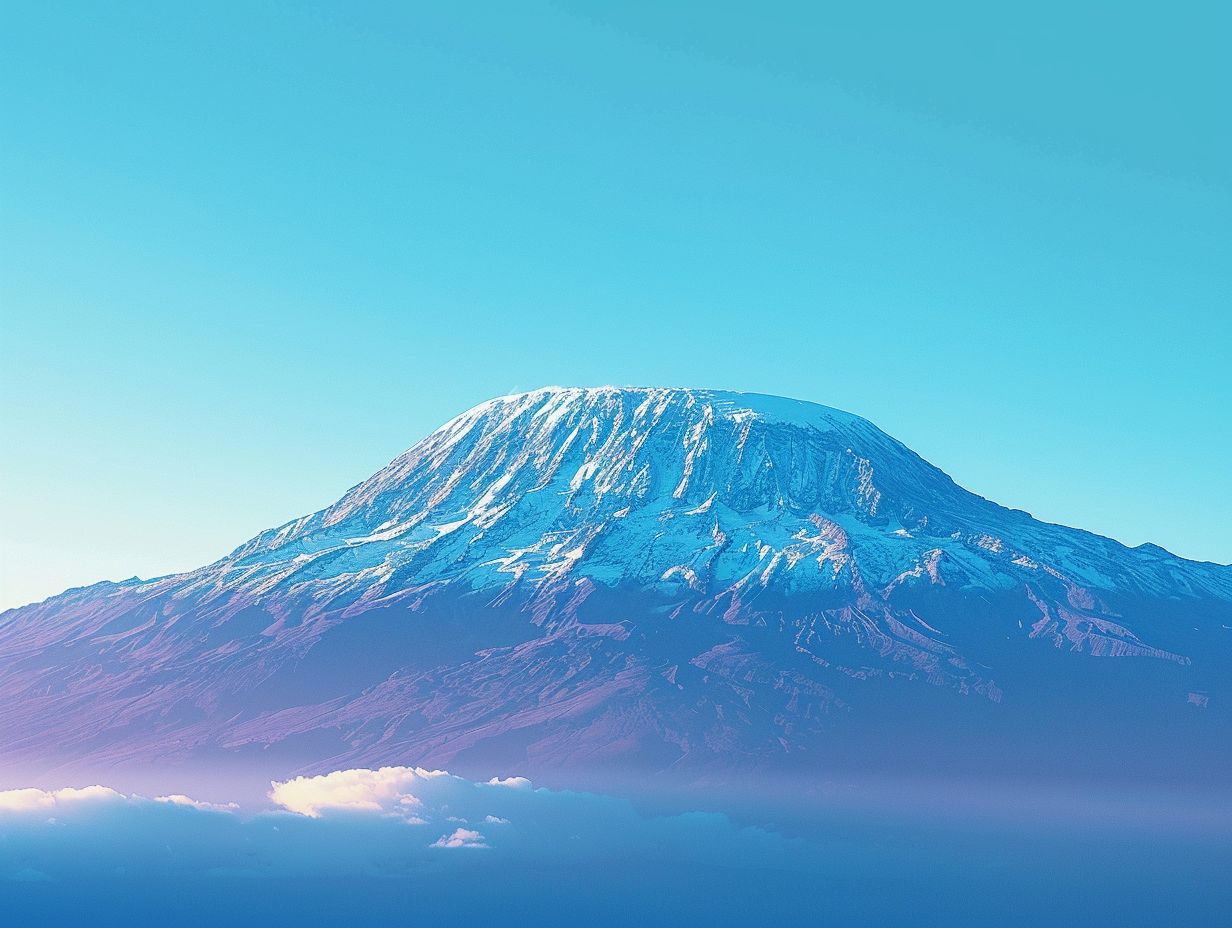
The Lemosho Route on Mount Kilimanjaro is known for its gradual ascent and scenic views, allowing climbers to acclimatize effectively while enjoying the panoramic landscapes and diverse ecosystems along the journey to the summit.
The gradual ascent of the Lemosho Route not only aids in acclimatization but also offers climbers a chance to immerse themselves in the breathtaking beauty of the region. As one progresses through the diverse landscapes, from lush rainforests to alpine deserts, each turn unveils a new spectacle.
The contrast of environments along the route provides a unique experience that showcases the ecosystem diversity of Kilimanjaro, making it a truly remarkable climb for nature enthusiasts.
Rongai Route
The Rongai Route on Mount Kilimanjaro is the only approach to the summit from the north, offering a less crowded and more remote trekking experience, allowing climbers to enjoy the quiet beauty of the mountain’s northern slopes.
Unlike some of the more popular routes like the Machame and Marangu, the Rongai Route is known for its tranquil and peaceful surroundings, making it an ideal choice for those seeking a more solitary adventure. The trail meanders through diverse landscapes, from lush rainforests to alpine meadows,
providing climbers with a unique perspective of Kilimanjaro. The route’s gradual ascent also aids in acclimatization, enhancing the overall climbing experience.
Northern Circuit Route
The Northern Circuit Route on Mount Kilimanjaro is known for its extended duration and panoramic vistas, offering climbers a comprehensive trek around the mountain’s northern slopes, passing through diverse ecosystems and less-trodden paths.
As you embark on this remarkable journey, you’ll witness a remarkable variety of landscapes, from lush rainforests to alpine desert zones, each with its own unique charm and challenges. The trail meanders through remote areas, providing a sense of solitude and wilderness rarely found on the more popular routes.
The Northern Circuit Route allows adventurers to explore off-the-beaten-path terrains and discover hidden gems that showcase the true essence of Kilimanjaro’s natural grandeur. The route’s longer duration also enhances acclimatization, increasing the chances of a successful summit bid while enabling travellers to fully immerse themselves in the awe-inspiring surroundings.
For those seeking an unparalleled trekking experience that goes beyond the ordinary, the Northern Circuit Route stands out as a prime choice, beckoning adventurers to embrace the untamed beauty of Kilimanjaro’s northern face.
What Are the Requirements for Climbing Mount Kilimanjaro?
To climb Mount Kilimanjaro successfully, climbers must meet various requirements, including physical fitness, proper gear and equipment, acclimatization to high altitudes, and adherence to permit regulations and guidance from experienced guides.
In terms of physical fitness, climbers should engage in regular cardiovascular and strength training to prepare their bodies for the demanding ascent. Proper gear and equipment are crucial, such as insulated clothing, sturdy hiking boots, and a reliable backpack. Acclimatizing to high altitudes is essential to avoid altitude sickness, so gradual ascent and rest days are recommended.
Obtaining permits in advance is mandatory to climb Kilimanjaro, and having knowledgeable guides is paramount for safety and navigation on the mountain. Their expertise can significantly enhance the overall experience and increase the chances of a successful summit.
Physical Fitness
Physical fitness is crucial for climbers attempting to conquer Mount Kilimanjaro, as the strenuous ascent and high altitudes demand endurance, strength, and cardiovascular fitness to navigate the challenging terrain and reach the summit successfully.
Endurance is vital for sustained energy throughout the climb, allowing climbers to endure long hours of trekking and adapt to the changing conditions.
Strength plays a key role in overcoming obstacles such as steep inclines and rocky paths, requiring muscle power to push forward. Cardiovascular fitness ensures proper oxygen circulation at high altitudes, combating the effects of altitude sickness and reducing the risk of exhaustion.
Being physically fit not only enhances performance but also minimizes the likelihood of injuries and accidents, making the climb safer and more enjoyable overall.
Proper Gear and Equipment
Having the proper gear and equipment is essential for climbers embarking on a Mount Kilimanjaro expedition, including specialized clothing, footwear, trekking poles, sleeping bags, and other necessary items to ensure comfort, safety, and preparedness for the challenging conditions.
Specialized clothing, such as moisture-wicking base layers, insulating mid-layers, and waterproof outer shells, are crucial to protect against the unpredictable weather on the mountain.
Sturdy and supportive footwear, like hiking boots with good ankle support and grip, is vital for traversing diverse terrains while minimizing the risk of injuries.
Trekking poles provide balance and stability, reducing strain on knees during steep ascents and descents.
High-quality sleeping bags designed for cold temperatures are essential for restful nights at high altitudes, ensuring climbers stay warm and comfortable.
Acclimatization
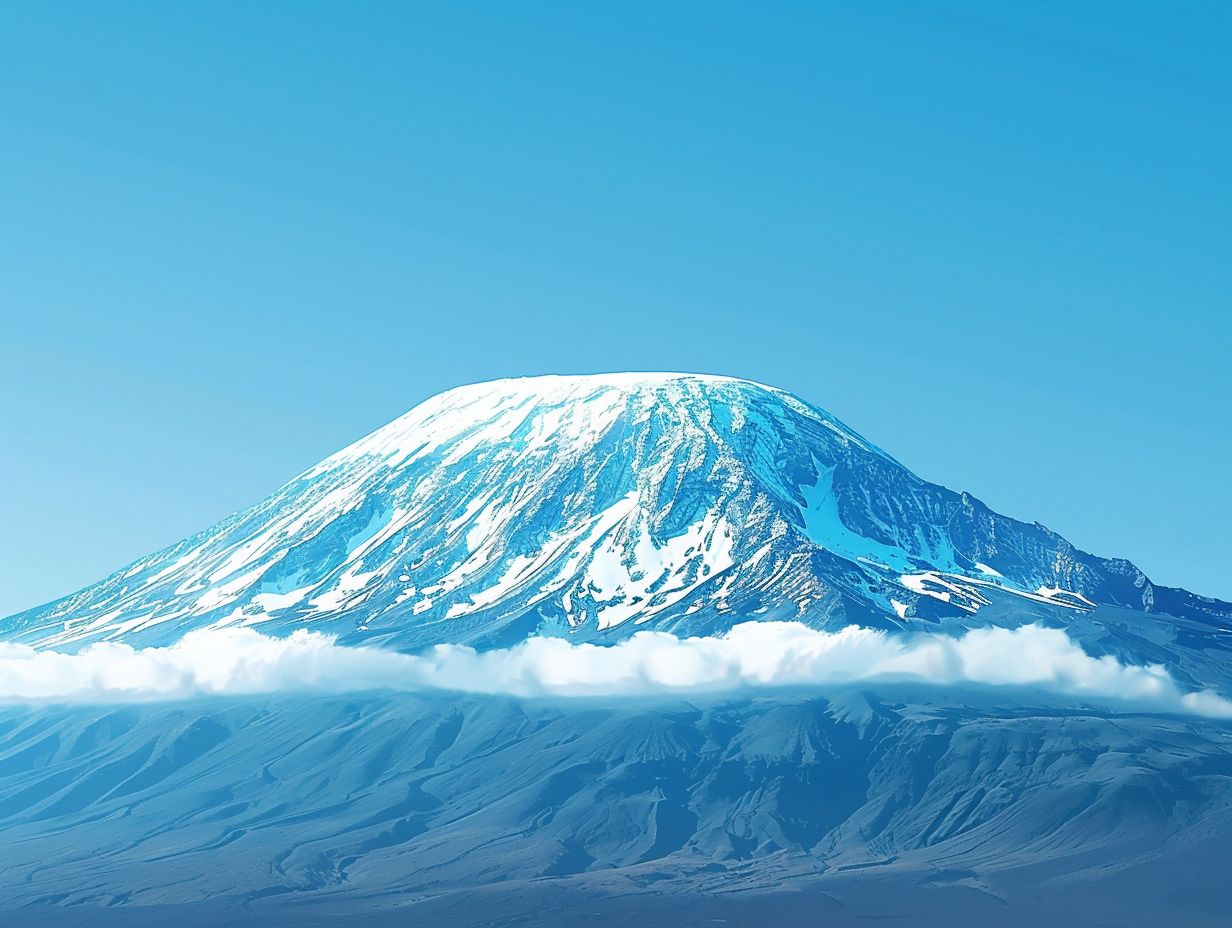
Acclimatization to high altitudes is critical for climbers tackling Mount Kilimanjaro, as the body needs time to adjust to reduced oxygen levels to prevent altitude sickness and ensure a successful and safe ascent to the summit.
Physiological adjustments at higher altitudes include an increase in breathing rate, heart rate, and blood flow to deliver oxygen more efficiently. Without proper acclimatization, climbers risk developing altitude sickness, which can range from mild symptoms like headaches and nausea to more severe conditions like pulmonary or cerebral edema.
To acclimatize effectively, climbers follow a ‘climb high, sleep low’ strategy, gradually ascending to higher altitudes during the day and descending to lower altitudes to sleep at night. This process allows the body to adapt to lower oxygen levels without overexertion.
Permits and Guides
Obtaining permits and enlisting the services of experienced guides are essential steps for climbers planning to ascend Mount Kilimanjaro, as permits regulate access to the mountain, and knowledgeable guides ensure safety, navigation, and support throughout the challenging expedition.
Permits for climbing Mount Kilimanjaro are mandatory and are typically issued by the Kilimanjaro National Park authority, each hiker needs to obtain a permit before starting the trek. These permits not only control the number of climbers on the routes but also contribute to conservation efforts.
Having a skilled guide is crucial as they possess in-depth knowledge of the terrain, climate variations, and the overall trekking experience. They play a key role in acclimatization, spotting altitude sickness, and managing emergency situations.
Frequently Asked Questions
Why Is Mount Kilimanjaro Famous?
Mount Kilimanjaro is famous for several reasons, including being the highest mountain in Africa, its stunning beauty, and its challenging hiking trails.
What makes Mount Kilimanjaro the highest mountain in Africa?
The summit of Mount Kilimanjaro, known as Uhuru Peak, stands at 19,341 feet (5,895 meters) above sea level, making it the highest point on the continent of Africa.
Why is Mount Kilimanjaro considered one of the most beautiful mountains in the world?
The majestic snow-capped peak of Mount Kilimanjaro rising above the African plains creates a breathtaking and iconic view that has captivated travelers and adventurers for centuries.
Are there any special features on Mount Kilimanjaro that make it stand out?
One of the most unique features of Mount Kilimanjaro is the fact that it has three volcanic cones, known as Kibo, Mawenzi, and Shira. Kibo is the highest and most well-known of the three.
What is the significance of Mount Kilimanjaro to the local Tanzanian people?
The Chagga people, who live in the foothills of Mount Kilimanjaro, have a deep cultural and spiritual connection to the mountain. It is considered a sacred place and is a source of livelihood for many in the region.
Why do so many people want to climb Mount Kilimanjaro?
Aside from the physical challenge and stunning views, climbing Mount Kilimanjaro also offers a sense of accomplishment and the opportunity to experience a unique and diverse ecosystem as you move through different climate zones on the mountain.